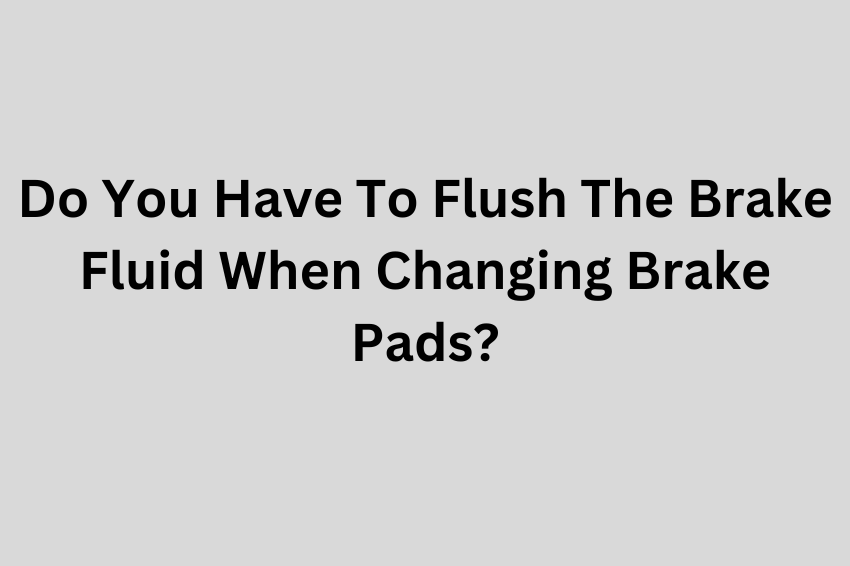Changing brake pads doesn’t necessitate a brake fluid flush. However, flushing is recommended every 2-5 years or when the fluid appears dark/contaminated. Fresh fluid ensures optimal braking performance.
Signs That Indicate I Need A Brake Fluid Flush Along With New Brake Pads
Here are some signs to watch out for that could indicate your car needs both services:
Spongy Brake Pedal:
When you press the brake pedal, it should feel firm and respond quickly.
If the pedal feels soft and mushy (like a sponge), it takes more pressure to slow down, and it goes further down than usual before stopping the car, this could be a sign of air or moisture in your brake fluid.
Increased Stopping Distance:
It’s taking your car longer than usual to come to a complete stop, even when applying moderate pressure to the brake pedal.
This can be dangerous and is a sign that your brakes aren’t functioning at their best.
Warning Lights:
Keep an eye on your dashboard for illuminated warning lights.
A lit Brake Warning Light or Anti-Lock Braking System (ABS) light could indicate issues with your brake fluid or other parts of the braking system.
Not sure if these signs apply to your car? It’s always best to err on the side of caution.
If you notice any of these changes in your braking performance, consult a qualified mechanic for a professional inspection.
They can assess your brake system’s health and recommend the appropriate services, whether it’s just new brake pads, a brake fluid flush, or a combination of both.
Can I Change The Brake Pads Myself And Skip The Brake Fluid Flush?
Let’s weigh the pros and cons before diving in, especially when considering skipping the brake fluid flush.
Pros:
Cost Savings: Replacing brake pads yourself can be cheaper than paying a mechanic.
Cons:
Skill Level: Safely replacing brake pads requires moderate to advanced mechanical knowledge.
Tools and Knowledge: You’ll need specific tools (wrenches, jack stands) and a clear understanding of proper procedures and safety precautions.
Consulting a repair manual (online or physical) can be a valuable resource.
Safety First: Working with brakes requires prioritizing safety.
Improper procedures can compromise your braking system and lead to dangerous situations.
Benefits Of Combining Flush with Pad Replacement:
While you can technically skip the flush, there are advantages to doing them together.
- Optimal Performance: Fresh brake fluid removes contaminants and improves the responsiveness of your entire braking system. This leads to a firmer brake pedal feel and potentially shorter stopping distances.
- Extends Brake System Life: Regularly flushing your brake fluid helps prevent corrosion within the system, extending the lifespan of your brake components.
If you’re a pro mechanic with the necessary tools and knowledge, changing your brake pads yourself might be possible.
However, for most people, the complexity and potential safety risks outweigh the cost savings.
Remember, your brakes are a critical safety system.
If you’re unsure about your DIY skills or have any concerns, consulting a qualified mechanic for a professional brake pad replacement and fluid flush is always the safest and most reliable option.
